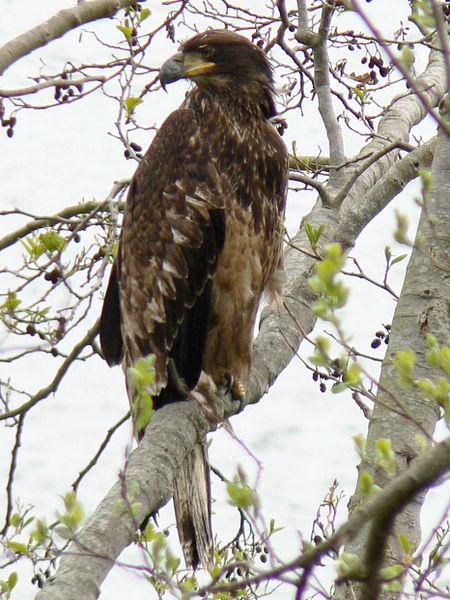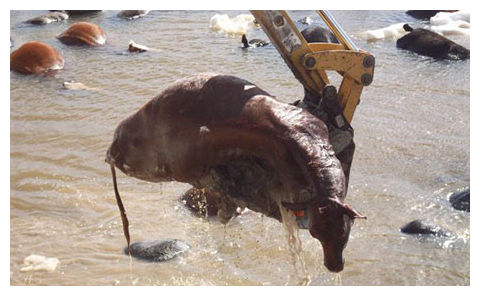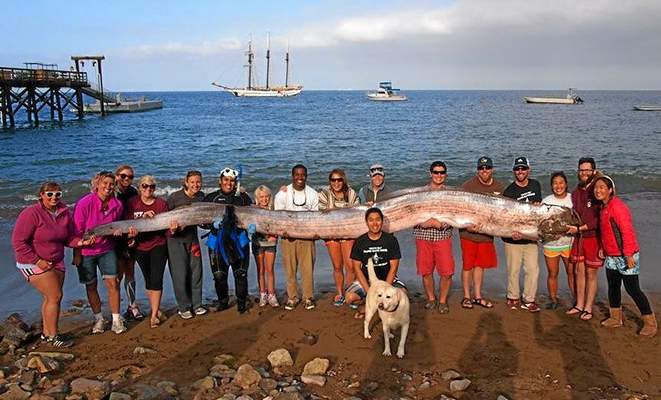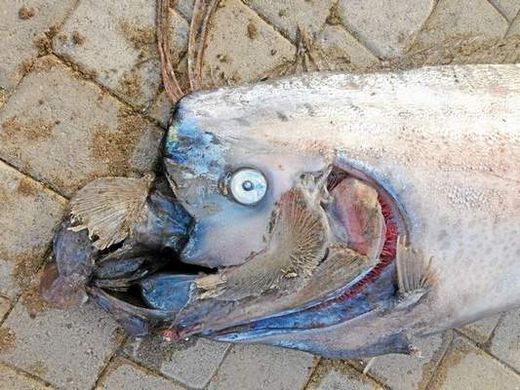
© Walter Siegmund, Wikimedia Commons.Bald Eagle, first year juvenile
A Michigan woman said a young bald eagle took up residence in her neighborhood and has been terrorizing her dogs.
Tami Bieri of Sebewaing said the bird, which her young daughter dubbed Derrick, has become a "nuisance bird" that poses a threat to her small dogs, WNEM-TV, Saginaw, reported Wednesday.
"I left my two dogs outside and my smaller dog was attacked by an eagle. And then as the eagle was taking off with the dog, my Jack Russell attacked the eagle and both dogs got away," Bieri said.
Bieri said local and state officials told her there is nothing they can do about the bird because bald eagles are federally protected.
"I've called the [Department of Natural Resources], the Sebewaing police, and they pretty much say there's nothing they can do because the eagle's not injured," Bieri said.
Karen Cleveland, a bird expert with the Michigan Department of Natural Resources, said residents can use non-violent methods to let the eagle know he is not welcome in the neighborhood.
"Clap your hands and yell at the bird when you see the bird around, bang on a pot when you see the bird around, go out there with an umbrella, flap the umbrella opened and closed to try and spook the bird off just so it doesn't feel settled around people," Cleveland said.




Comment: See also.
Something amiss deep down? Bizarre-looking oarfish washes ashore on Cabo San Lucas beach
Appearance of "Earthquake fish" spook Japanese
Rare "King of Herrings" Found off Swedish Coast
England: Monster of deep washes up on beach